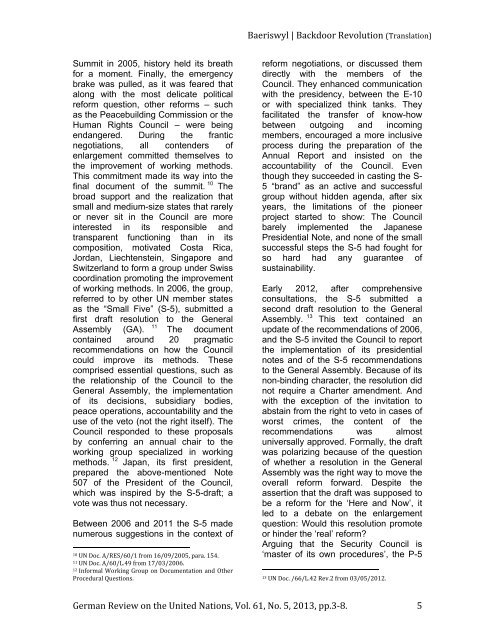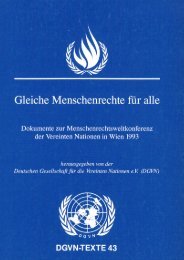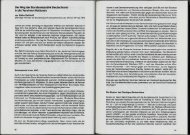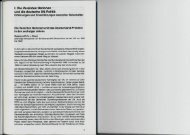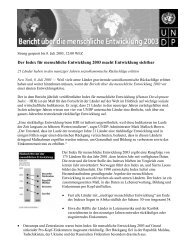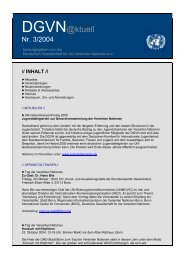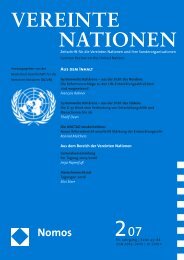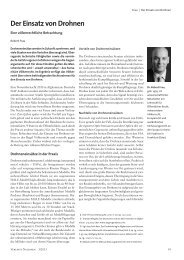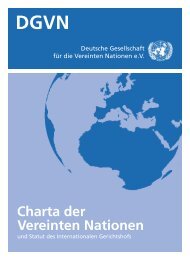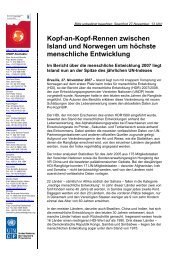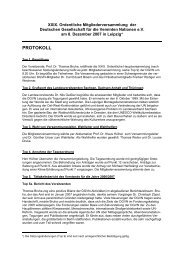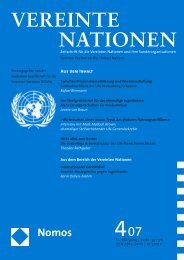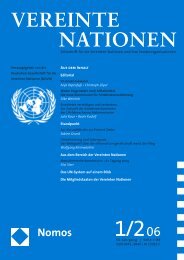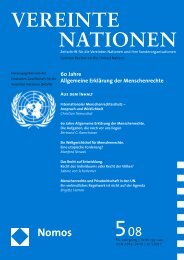Backdoor Revolution. Modern Working Methods for a more efficient ...
Backdoor Revolution. Modern Working Methods for a more efficient ...
Backdoor Revolution. Modern Working Methods for a more efficient ...
Create successful ePaper yourself
Turn your PDF publications into a flip-book with our unique Google optimized e-Paper software.
Baeriswyl | <strong>Backdoor</strong> <strong>Revolution</strong> (Translation) <br />
Summit in 2005, history held its breath<br />
<strong>for</strong> a moment. Finally, the emergency<br />
brake was pulled, as it was feared that<br />
along with the most delicate political<br />
re<strong>for</strong>m question, other re<strong>for</strong>ms – such<br />
as the Peacebuilding Commission or the<br />
Human Rights Council – were being<br />
endangered. During the frantic<br />
negotiations, all contenders of<br />
enlargement committed themselves to<br />
the improvement of working methods.<br />
This commitment made its way into the<br />
final document of the summit. 10 The<br />
broad support and the realization that<br />
small and medium-size states that rarely<br />
or never sit in the Council are <strong>more</strong><br />
interested in its responsible and<br />
transparent functioning than in its<br />
composition, motivated Costa Rica,<br />
Jordan, Liechtenstein, Singapore and<br />
Switzerland to <strong>for</strong>m a group under Swiss<br />
coordination promoting the improvement<br />
of working methods. In 2006, the group,<br />
referred to by other UN member states<br />
as the “Small Five” (S-5), submitted a<br />
first draft resolution to the General<br />
11<br />
Assembly (GA). The document<br />
contained around 20 pragmatic<br />
recommendations on how the Council<br />
could improve its methods. These<br />
comprised essential questions, such as<br />
the relationship of the Council to the<br />
General Assembly, the implementation<br />
of its decisions, subsidiary bodies,<br />
peace operations, accountability and the<br />
use of the veto (not the right itself). The<br />
Council responded to these proposals<br />
by conferring an annual chair to the<br />
working group specialized in working<br />
methods. 12 Japan, its first president,<br />
prepared the above-mentioned Note<br />
507 of the President of the Council,<br />
which was inspired by the S-5-draft; a<br />
vote was thus not necessary.<br />
Between 2006 and 2011 the S-5 made<br />
numerous suggestions in the context of<br />
10 UN Doc. A/RES/60/1 from 16/09/2005, para. 154. <br />
11 UN Doc. A/60/L.49 from 17/03/2006. <br />
12 In<strong>for</strong>mal <strong>Working</strong> Group on Documentation and Other <br />
Procedural Questions. <br />
re<strong>for</strong>m negotiations, or discussed them<br />
directly with the members of the<br />
Council. They enhanced communication<br />
with the presidency, between the E-10<br />
or with specialized think tanks. They<br />
facilitated the transfer of know-how<br />
between outgoing and incoming<br />
members, encouraged a <strong>more</strong> inclusive<br />
process during the preparation of the<br />
Annual Report and insisted on the<br />
accountability of the Council. Even<br />
though they succeeded in casting the S-<br />
5 “brand” as an active and successful<br />
group without hidden agenda, after six<br />
years, the limitations of the pioneer<br />
project started to show: The Council<br />
barely implemented the Japanese<br />
Presidential Note, and none of the small<br />
successful steps the S-5 had fought <strong>for</strong><br />
so hard had any guarantee of<br />
sustainability.<br />
Early 2012, after comprehensive<br />
consultations, the S-5 submitted a<br />
second draft resolution to the General<br />
Assembly. 13 This text contained an<br />
update of the recommendations of 2006,<br />
and the S-5 invited the Council to report<br />
the implementation of its presidential<br />
notes and of the S-5 recommendations<br />
to the General Assembly. Because of its<br />
non-binding character, the resolution did<br />
not require a Charter amendment. And<br />
with the exception of the invitation to<br />
abstain from the right to veto in cases of<br />
worst crimes, the content of the<br />
recommendations was almost<br />
universally approved. Formally, the draft<br />
was polarizing because of the question<br />
of whether a resolution in the General<br />
Assembly was the right way to move the<br />
overall re<strong>for</strong>m <strong>for</strong>ward. Despite the<br />
assertion that the draft was supposed to<br />
be a re<strong>for</strong>m <strong>for</strong> the ‘Here and Now’, it<br />
led to a debate on the enlargement<br />
question: Would this resolution promote<br />
or hinder the ‘real’ re<strong>for</strong>m?<br />
Arguing that the Security Council is<br />
‘master of its own procedures’, the P-5<br />
13 UN Doc. /66/L.42 Rev.2 from 03/05/2012. <br />
German Review on the United Nations, Vol. 61, No. 5, 2013, pp.3-‐8. <br />
5


